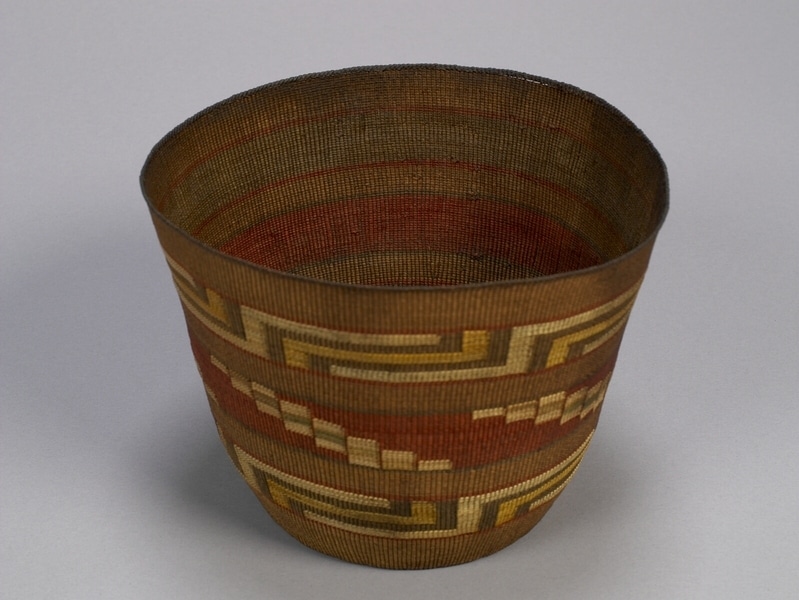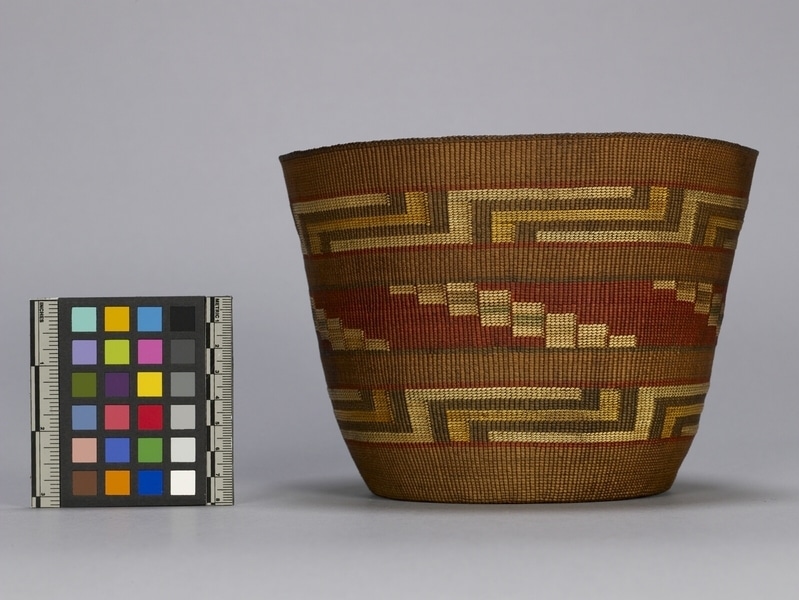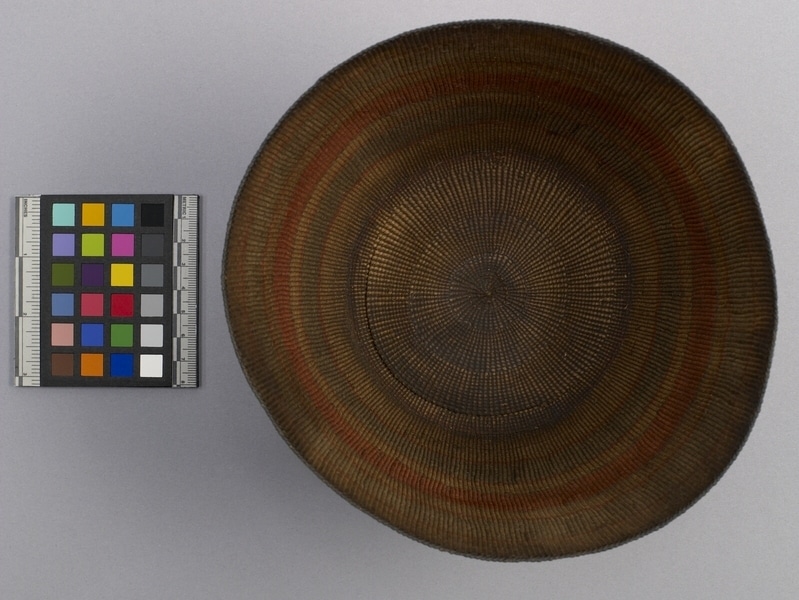Basket Item Number: A8992 from the MOA: University of British Columbia



Description
Open spruce root basket; fine twined work; braided border; embroidered design. Two ribbons of pattern in yellow on black ground bordered by red; in the centre is a stepped design in squares of yellow/green/yellow on a red ground bordered by black.
History Of Use
By the 1880s, Sitka, Juneau, and other southeastern Alaskan towns were frequented by tourists and basketry collectors seeking “Indian crafts.” The Victorian era had rapid growth of both industrial production and middle-class tourism. Also, a burgeoning cash economy and gold mining were also taking hold in Alaska. These factors helped to bring the market for Tlingit basketry and carvings to a high point around the turn of the century, but also – in the face of colonial encroachment – to circulate these artworks by Tlingit women as expressions of their own connection to the land.
Basket makers continued to make slightly flared, cylindrical baskets for berry picking or as heirlooms, while also making these and small lidded baskets for sale. The twining technique and use of false embroidery – the spruce-root weft is wrapped with dyed grass or maidenhair-fern stem to form geometric patterns – are characteristics of Tlingit basketry dating to at least the late 18th century; they continue in the hands of contemporary weavers. Commercial aniline dyes allowed weavers to achieve brilliant colours without the time-consuming process of extracting dyes from natural sources, and reveal the spirit of experimentation with which the women carried forward their practice and their knowledge of the named patterns and symbols. Of the thousands of baskets that weavers sold to visitors, many pieces were eventually put back into the market or donated by their owners over ensuing decades, becoming the foundation of most museum and art gallery collections of Tlingit basketry today.
Item History
- Made in Alaska, USA between 1880 and 1910
- Owned by Mrs. Johnson
- Owned by Mrs. W. C. Woodward before December 1951
- Received from Mrs. W. C. Woodward (Donor) during December 1951
What
- Name
- Basket
- Identification Number
- A8992
- Type of Item
- basket
- Material
- dye, swamp grass and spruce root
- Manufacturing Technique
- twined and false embroidered
- Overall
- height 13.8 cm, diameter 19.3 cm
Who
- Culture
- Tlingit
- Previous Owner
- Mrs. Johnson and Mrs. W. C. Woodward
- Received from
- Mrs. W. C. Woodward (Donor)
Where
- Holding Institution
- MOA: University of British Columbia
- Made in
- Alaska, USA
When
- Creation Date
- between 1880 and 1910
- Ownership Date
- before December 1951
- Acquisition Date
- during December 1951
Other
- Item Classes
- basketry
- Condition
- fair
- Accession Number
- 2155/0012